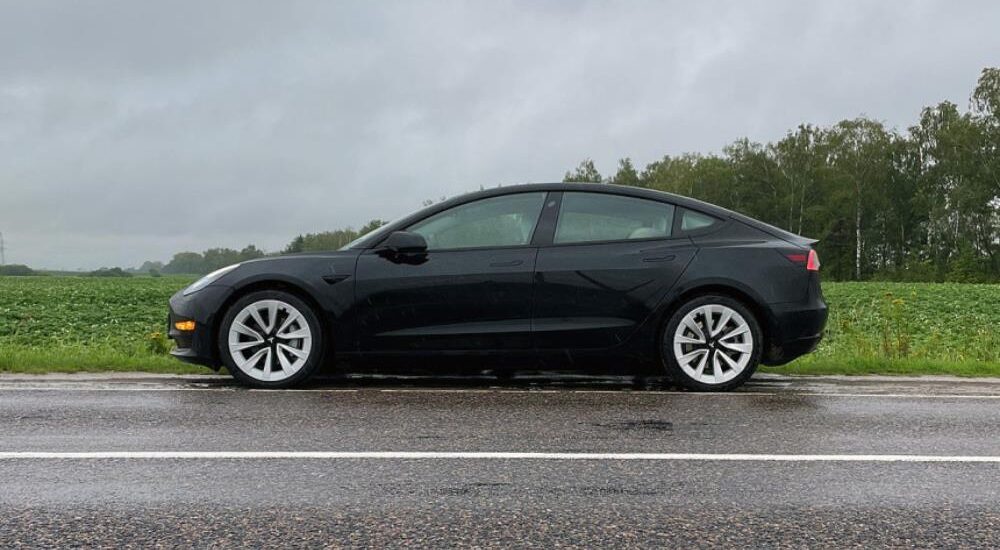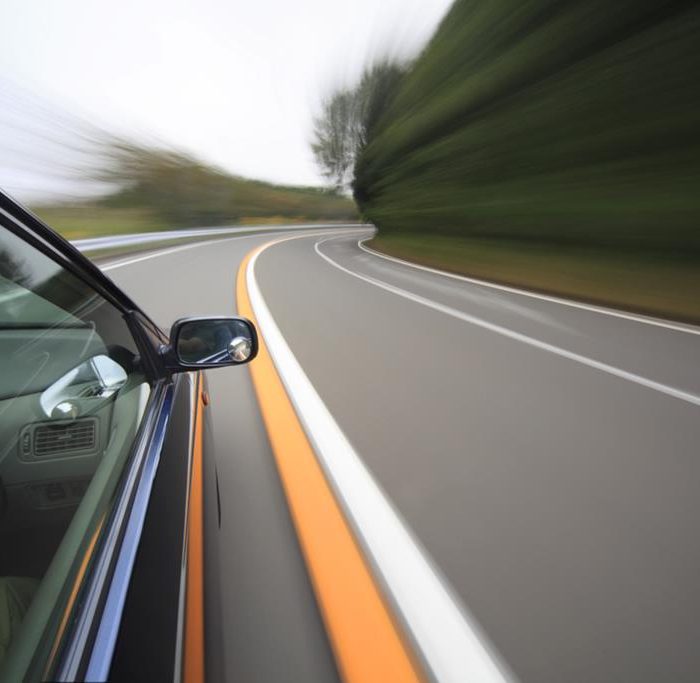The Tesla Experience Part One: From Auction to Road
In English language textbooks, there’s an exercise called “find the odd word,” where among a series of similar words, you need to pick the one that doesn’t fit. My car fleet could be a perfect set for such an exercise: BMW 320i (E36), BMW 520i (E28), BMW 520i (E34), Cadillac Fleetwood, Peugeot 405, and… Tesla Model 3. How did that happen? Let me explain.
The BMW 320d of the F30 generation is a fantastic car. Over ten years of ownership, I’ve come to believe that this compact diesel sedan is ideal as a family vehicle. Yes, it’s rear-wheel drive, but that’s just a matter of skill between the steering wheel and the seat. Yes, it’s not the most spacious, but even with two kids, it’s entirely adequate. And with two hundred diesel “horses,” four hundred Newton-meters, and a fantastic ZF automatic transmission, it always had power to spare. Moreover, reliability has never been an issue during all this time.
Yet, I wanted to upgrade the “three.” It wasn’t necessary, but I wanted to. Especially since there were spare funds (which were rapidly depreciating). For me, replacing a car means either an upgrade or something radically new. But fulfilling wet fantasies about BMW X7 or Porsche Cayenne crossovers with their price tags was impossible without loans and debts. And swapping the F30 “three” for the G20 “three” was akin to throwing away three million. It’s the same car, just a bit newer. So, onwards into the unknown!
Buying a Tesla, on one hand, was an adventure. But on the other, it was a cynical calculation. Because an electric car means:
- No tax, free parking, and charging.
- Over 400 horsepower in a family car form factor. And performance that would make many sports cars envious.
- A wonderful new world where everything is different. A ten-minute ride in Mikhail Podorozhansky’s Tesla Model S has left a lasting impression.
- And all of this for the price of a modestly equipped BMW 320d (G20).
The next question: why Tesla? Simply because Elon Musk is a genius. And also because his company has a fresh perspective and unconventional solutions. Everything aligned perfectly here: Tesla Inc. has no decades of experience in building cars, and I have no infrastructure for operating an electric car. I live on the thirteenth floor of a panel building in a residential area of Moscow. No underground parking, no country house. In short, no guaranteed charging spot. As I said — an adventure!
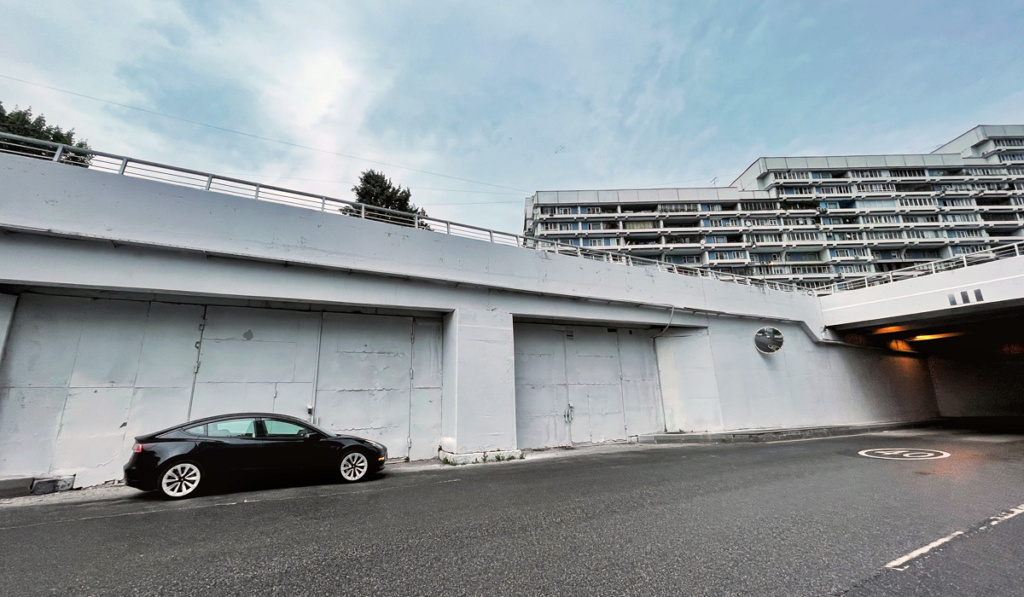
However, there was a calculation here too. On weekdays, I almost always use public transport and see no point in driving in Moscow. And the average weekend mileage is 200-300 kilometers. At first, I thought that with this schedule, the charging issue could always be solved. But that was just wishful thinking.
Choosing the model and modification was simple: an upgraded two-engine Tesla Model 3 Performance from the 2021 model year. Simply because the traction battery had to be large and the power had to be maximum. But going to a dealership and choosing a car from the available stock was too expensive and boring. Based on my estimates, the margin of gray importers at that time (end of 2021) could reach up to 40%! Too much. Fortunately, my acquaintances were involved in importing cars from America — they encouraged me to consider buying a Tesla. And I decided to go through the entire process with them — from choosing a car at an insurance auction in the States to registering it in Russia.
Yes, you understood correctly: I decided to buy a “total loss” car and then repair it in Moscow. Experience in restoring my young timers taught me that it’s not all that scary. And choosing a car at the auction turned out to be perhaps the most interesting stage of the whole process. Firstly, it’s a lottery in many ways. Information about lots is quite scarce: a dozen or so poorly lit photos, a brief description of damages, and the status of whether it’s drivable or not. So, you look, guess, choose — and pray.





Secondly, if in Russia a “total loss” is usually a car that has been through the meat grinder, in the States, insurance companies sometimes write off cars with minimal damage. Expensive labor works in their favor. Nevertheless, finding a fresh Model 3 Performance in decent condition proved to be impossible. So, I lowered my expectations and reluctantly agreed to the Long Range version — also dual-engine, but less powerful (440 instead of 513 hp). The choice was much wider, but not enough to be picky about the body color or interior.
We didn’t buy the car on the first attempt with my partners. We haggled somewhere, and the prices turned out to be significantly higher than expected elsewhere. Especially since the auction for a specific lot lasts less than a minute. Yes, there are several days to make a decision, but the bids themselves have to be made very quickly. And then suddenly, a very interesting Tesla Model 3 Long Range surfaced — already upgraded, absolutely intact, drivable, with a laughable mileage of 10,000 miles. Radically black with a fancy white interior. It surfaced in the literal sense of the word: the car had been submerged, though not severely. Judging by the marker mark on the pillar, the water rose slightly above the wheel hubs. The interior was free of water and mold, and there were no external damages — tempting? Yes! But the traction battery and electric motors were at risk. We decided to take the risk, after calculating the costs of replacing the engines.




We didn’t win. The winning bid turned out to be a few hundred dollars higher. We were disappointed again — and went back to browsing the listings. But suddenly, in the morning, news came that the winner had backed out of the purchase. And that means I become the owner of a Tesla Model 3 Long Range sedan, my first electric car in life. Well, legally the owner, that is. And even then, with reservations. Very big reservations.

A marker mark in the doorway indicates the water level during flooding.
On December 25, 2021, I paid $34,075 for the car, about $1,000 in auction fees, and roughly the same amount for shipping the car to the port of New York. In total — 2,748,694 rubles at the exchange rate on the day of payment. And then the most interesting part began. The ship with my car left the port on February 25, 2022. You understand, right? In the 45 days it took the cargo ship to reach Klaipeda, Russia was hit with sanctions worse than a bad stand-up comedian is hit with tomatoes. Morally, I had already said goodbye to my Tesla and wrote off nearly three million rubles for this amusing but not very successful experience.
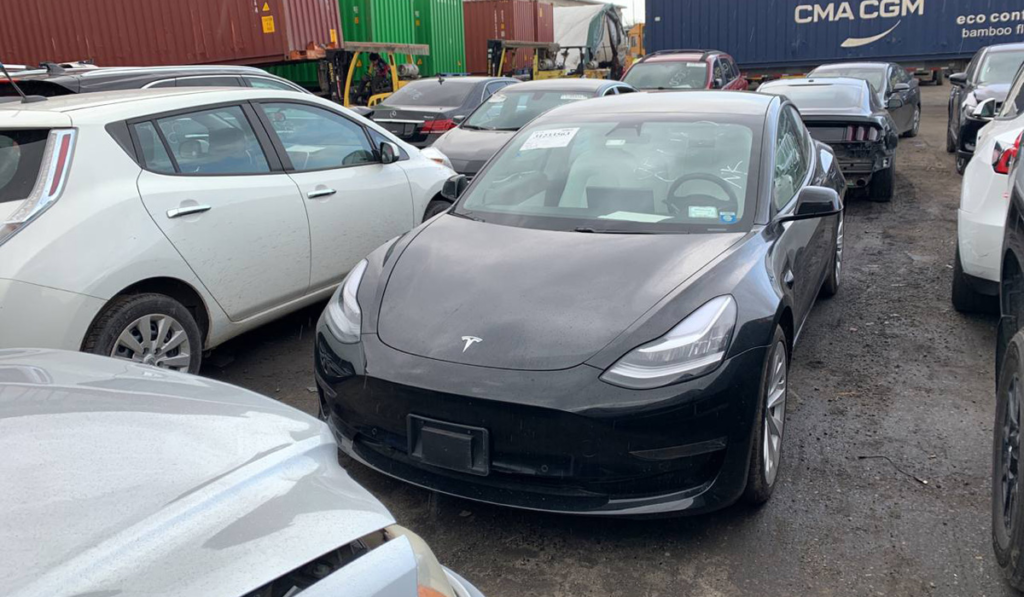
Already purchased Tesla at the port before loading onto the ship.
The car did make it to Lithuania. And then the fun began. I waited a month and a half for it to be loaded onto a tow truck that would take the Tesla to Belarus. The guys at the Baltic port were very leisurely and unloaded the cars from the containers, to put it mildly, without haste. Additional sanctions played a role, as delivering a car from Europe could only be done in a semi-private manner, not by containers as before. Then came the Belarusian customs. Everything went more or less smoothly there, but a 15% import duty (about $5,400) still had to be paid (duty-free import ended in 2021).
Next was obtaining the Vehicle Safety Certificate (SBKTS). Tesla has never had official representation in Russia, which means there is no Vehicle Type Approval either. In such cases, the car must undergo an individual procedure to check compliance with Russian requirements. I had to replace the rear lights with European ones (with yellow turn signal lenses) and perform a few more operations — plus a couple or three hundred dollars for parts. The most agonizing part was the waiting. The flood of gray imported cars inundated the country, and I had to wait my turn for two months! As a result, I only received the SBKTS in the autumn of 2022. And with all the associated costs, the Tesla cost me 3.4 million rubles. All that was left was to hang the license plates. But before registering the car, I had to understand the extent of the disaster. After all, the car had been submerged.
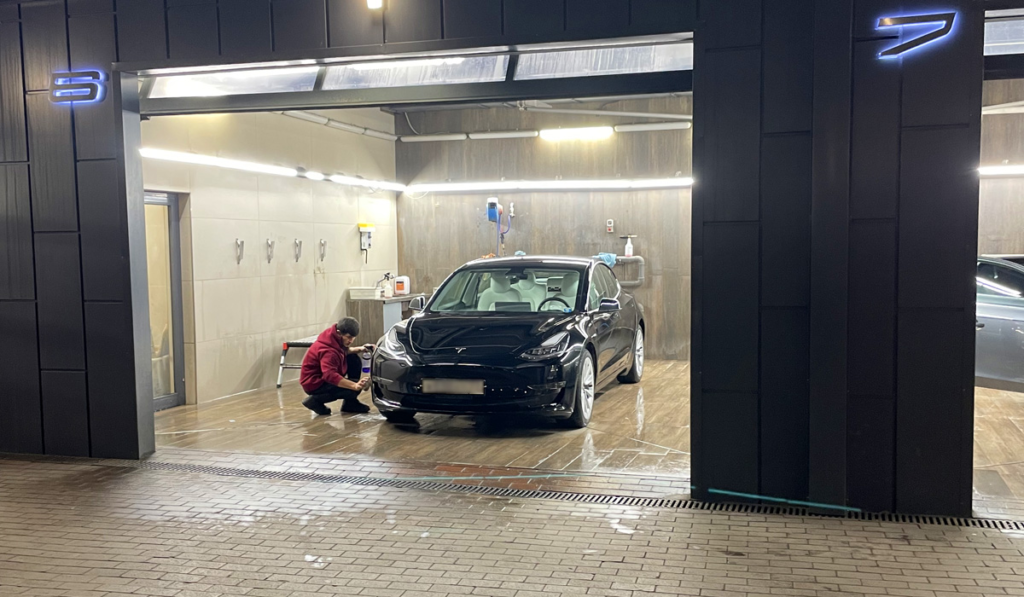
The Tesla was dismantled everywhere they could, but they found nothing criminal. There was no smell, and even the French fries somewhere under the mats turned out to be dry and mold-free. That’s a good sign! But I still had to invest, although replacing the right fog light, 12-volt battery, and a couple of sensors hardly constitutes significant expenses. Overall, I was very lucky. Buying a flooded electric car and not running into problems with the electrical system, electronics, and all that — that’s rare luck. I don’t rule out that the consequences of the flooding will make themselves felt in the future, but I’ve been driving this Tesla for over a year now, and nothing has come up yet.
And as for operating an electric car in Moscow without my own charging station and garage, I’ll tell you about it in the next part.
Photo: Nikita Sitnikov | online auctions
This is a transaltion. You can read the original article here: Tesla для петролхеда. Часть первая: покупка в Америке и доставка в Россию

